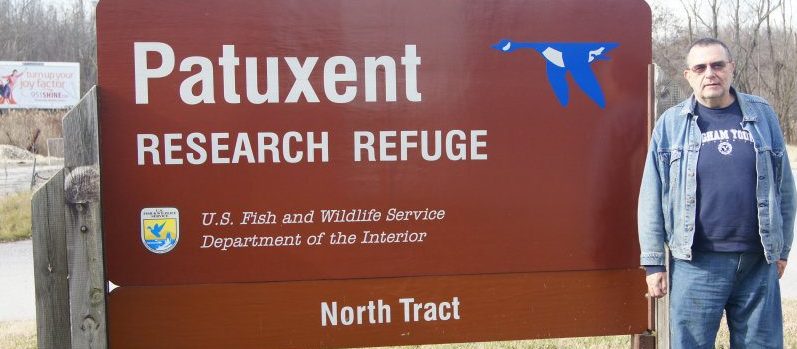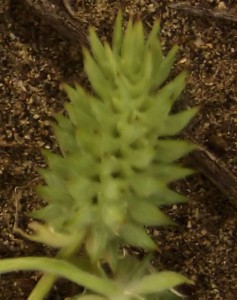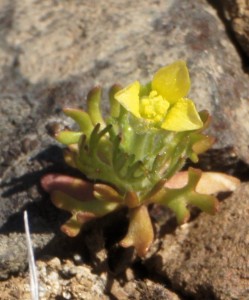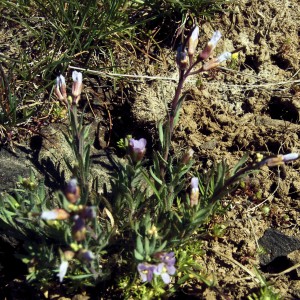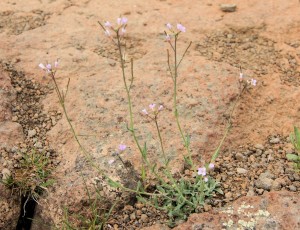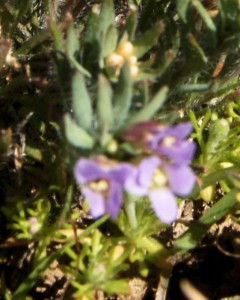
The tiny-flowered Maiden Blue-eyed Mary (Collinsia parviflora Lindl.) is native to most of western North America and to Michigan, Rhode Island, Pennsylvania, Vermont, Ontario, and Prince Edward Island. This member of the Plantaginaceae family is a spring ephermal that is commonly overlooked under other larger flowers.

“Collinsia” was named for Zaccheus Collins, 1764-1831, eminent botanist from Philadelphia. “Parviflora” is Latin for “small-flowered”.
(These photos were taken at the Eastbound Ryegrass Summit Rest Area, 31 March 2013 by Bill Harms)
Reference:
http://www.swcoloradowildflowers.com/Blue%20Purple%20Enlarged%20Photo%20Pages/collinsia%20parviflora.htm
